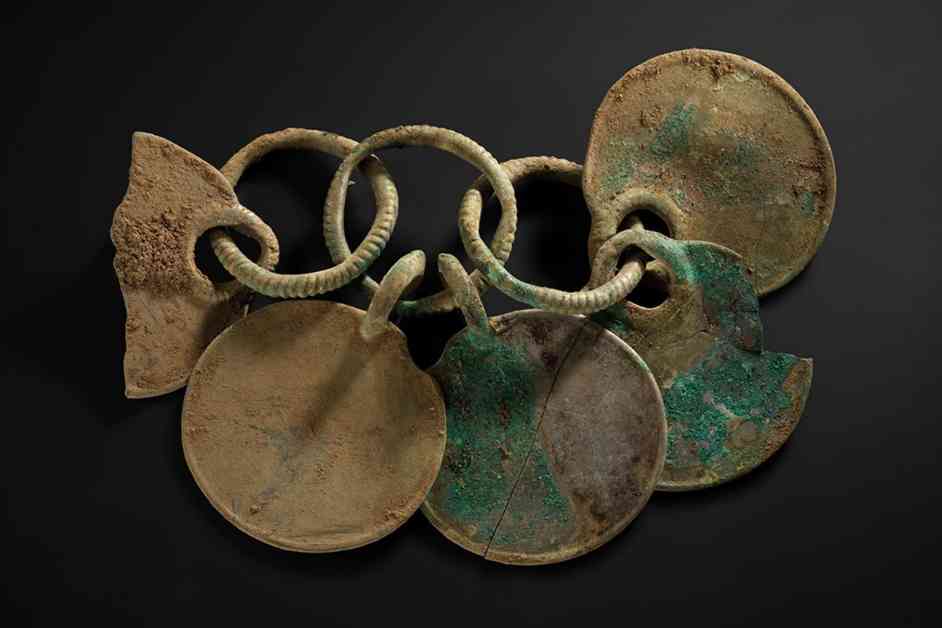A significant hoard from the Bronze Age that was discovered in Scotland has been acquired by National Museums Scotland, ensuring its preservation for the nation. The Peebles Hoard, found in the Scottish Borders by a metal detectorist in 2020, contains over 500 rare bronze and organic pieces dating back to 1000–800 BCE.
Efforts are now being made to secure funding for further research and conservation of this unique discovery. The hoard, which includes objects with no archaeological parallel in western Europe, has the potential to transform our understanding of Bronze Age Scotland.
Among the exceptional artifacts found in the hoard are two rattle pendants, the first of their kind in Scotland, typically found in countries like Denmark, northern Germany, and northern Poland. These pendants were designed to hang from a horse or wooden vehicle and create a rattling sound as they moved.
The discovery also includes a sword still in its wooden scabbard, small bronze buttons looped onto cords, and minute bronze pins, studs, and bosses embedded in wood or leather. The hoard offers a detailed insight into Bronze Age life that is rarely seen.
The hoard was carefully excavated and analyzed by experts from National Museums Scotland and the Treasure Trove Unit, with the help of CT scanning technology from the University of Southampton. The scanning revealed details of the internal structure and production techniques, including evidence of ‘lost-wax casting’, a rare method in Bronze Age Britain.
Dr. Matthew Knight, Senior Curator of Prehistory at National Museums Scotland, described the Peebles Hoard as exceptional and a discovery that reshapes our understanding of Bronze Age communities in Scotland and their international connections. However, more funding is needed for conservation and research to preserve the hoard for future generations.
To support the essential conservation and research of the Peebles Hoard, National Museums Scotland is launching a fundraising campaign. The hoard’s fragile organic materials require immediate attention to prevent further deterioration and unlock its significant research potential.
This remarkable discovery not only sheds light on Scotland’s ancient past but also highlights the importance of preserving and studying such unique artifacts for future generations to appreciate and learn from.
































